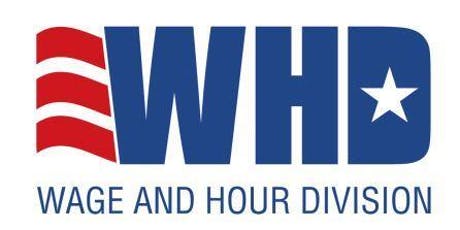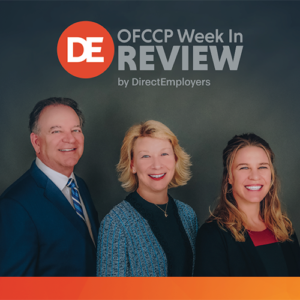Tuesday, November 23, 2021: Nondisplacement of Qualified Workers Executive Order Now Officially EO 14055

Please read the details in our story last week, which is now updated to include the Federal Register link.
Wednesday, November 24, 2021: New $15.00 Minimum Wage Rule for SOME Employees of Federal Contractors by January 30, 2022 is a Complex Web of Broadened Inclusions and Technical Exclusions

The Final Rule issued last Wednesday builds on and expands the prior Obama February 12, 2014 Minimum Wage Executive Order 13658 (“Establishing a Minimum Wage for Contractors”). The new Final Rule is expected to potentially cover over a half-million employers (including construction employers) and to potentially raise the wages of 1.8 million employees beyond the minimum wage the Congress has ordered pursuant to the federal Fair Labor Standards Act.
The rule applies in all 50 states, (and unlike the Obama Order) the District of Columbia, and specified U.S. territories and does the following:
- Increases the hourly minimum wage for workers “performing work on or in connection with” covered federal contracts to $15.00/hr beginning January 30, 2022.
- Eliminates the tipped minimum wage for federal contract employees by 2024.
- Ensures a $15.00/hr minimum wage for workers with disabilities performing work on or in connection with covered contracts.
- Withdraws the Trump May 25, 2018 Executive Order 13658 (“Exemption from Executive Order 13658 for Recreational Services on Federal Lands”) and restores minimum wage protections to outfitters and guides operating on federal lands.
Executive Order 14026 applies to new contracts, renewals, and extensions of existing contracts, beginning January 30, 2022. NOTE: President Obama’s Executive Order 13658 did not retroactively apply the minimum wage he ordered up to the federal government’s unilateral exercise of a pre-negotiated option to renew an existing multi-year contract.
Also, reading the fine print of the new Final Rule, it remarkably expands the Biden Executive Order to “independent federal agencies” in the federal Government not part of the Executive Branch of the federal government which is the only part of the federal government the President controls.
How to Parse Which Employees are Entitled to the New Higher Minimum Wage
There are Section 503 of the Rehabilitation Act (“Section 503”) case law decisions interpreting language similar to the new Minimum Wage order extending protections to only those employees “performing work on or in connection with” covered federal contracts. Prior to its amendment in 1992, Section 503 applied only to employees “working on or under” a covered federal Government contract. Those case decisions interpreted the Section 503 language to impose on USDOL the requirements to:
- carry the burden of proof to prove that an at-issue employee was covered under the federal contract; and
- trace the goods or services provided through the industrial journey of the product to show that the good or service the federal government received was the same good or service the at-issue employee provided. Mere USDOL assumptions that large volumes of sales to a federal agency must necessarily involve the employee in the federal contract or subcontract were insufficient, the Section 503 cases held, to prove that any particular employee provided the federal service.
Covered federal contractors will also have to parse which hours an employee is “performing work on or in connection with” the federal contract to know for which hours to increase pay. This parsing was a MAJOR headache and came with significant expense for most Section 503 contractors before 1992.
How We Got Here
- WIR: September 15, 2021: Federal Contractor Minimum Wage Increase on The Horizon
- WIR: April 27, 2021: Federal Contractors Beware – New Minimum Wage Coming
Additional Press Releases
THIS COLUMN IS MEANT TO ASSIST IN A GENERAL UNDERSTANDING OF THE CURRENT LAW AND PRACTICE RELATING TO OFCCP. IT IS NOT TO BE REGARDED AS LEGAL ADVICE. COMPANIES OR INDIVIDUALS WITH PARTICULAR QUESTIONS SHOULD SEEK ADVICE OF COUNSEL.
SUBSCRIBE.
Compliance Alerts
Compliance Tips
Week In Review (WIR)
Subscribe to receive alerts, news and updates on all things related to OFCCP compliance as it applies to federal contractors.
OFCCP Compliance Text Alerts
Get OFCCP compliance alerts on your cell phone. Text the word compliance to 55678 and confirm your subscription. Provider message and data rates may apply.

